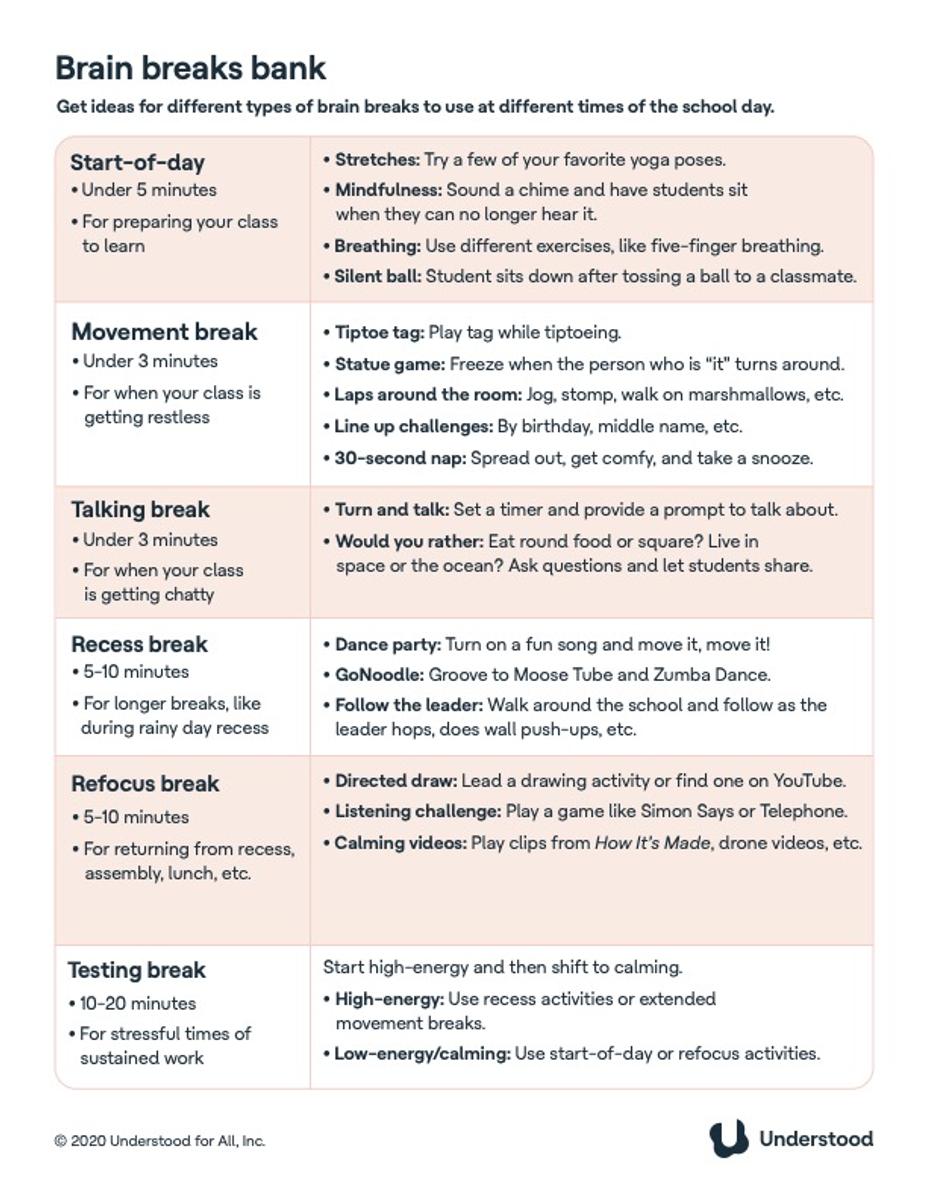Autism Practices
Learning Specialists & Leading Teachers

Autism Practices
Learning Specialists & Leading Teachers
Welcome to our new page called 'Autism Practices'.
As part of our AIP, the SIT team has committed to putting together a page that highlights autism practices and strategies. Therefore, we will have different leaders contributing to this page fortnightly, if not weekly.
Remember to consult with experts in the field, individuals with autism, and their families to ensure that the information provided is accurate, respectful, and inclusive. Additionally, consider the accessibility of the page to ensure that it can be easily understood and navigated by individuals with diverse needs.
Some of the topics may include:
This week:
Brain breaks are quick, structured breaks using physical movement, mindfulness exercises, or sensory activities.
When you’re creating a lesson plan or reviewing student work, do you often need a break? Do you take a walk or listen to your favourite song to get your mind refocused? Your students need these “brain breaks,” too.
In the classroom, brain breaks are quick, structured breaks using physical movement, mindfulness exercises, or sensory activities. Brain breaks can be done individually (like deep breathing) or as a whole class (like a round of Simon Says). No matter what the form, brain breaks take only a few minutes of instructional time. They give your students a brief rest from what they’re doing to help their brains shift focus and return ready to work and learn.
You can use different types of brain breaks depending on what a student needs at a given time. Remember that different brains need different kinds of breaks. For example, although it may seem counterintuitive, students who struggle with focus, attention, and hyperactivity may need more energizing breaks. Other students may need to quiet their minds.
Energizing brain break
Try a dance break with this video from Koo Koo Kanga Roo.
https://youtu.be/XXH0EAKzPcM?si=x3nUzGJE8l64kEQi
Mindfulness brain break
Watch how students at the Momentous School take a break with “flower and candle” breathing.
https://youtu.be/Wc9pBYl1-Mk?si=cjXh58pydOfFoSwu
Looking for quick brain break ideas?


Why this strategy works
Students who learn and think differently sometimes get tired easily, have a low tolerance for frustration, or have trouble figuring out how to approach their work. Switching up what they’re doing for a few minutes can help break those patterns. Research shows that brain breaks can serve that purpose and help refresh the mind.
For many students, movement is an ideal brain break. That’s because exercise increases blood flow to the brain, which helps with focus and attention. In fact, research has shown that students learn more quickly after they’ve exercised. In one study, students learned vocabulary words 20% faster after exercising. Exercise also reduces stress and anxiety, making it easier to focus on important tasks.
Relaxing brain breaks have similar benefits. They help calm students and allow their minds to settle enough to shift focus. For students who get overexcited or who have a hard time self-regulating, relaxing brain breaks may be more beneficial than energizing ones. After these quieter breaks, students are able to return to work because they’ve given the overworked areas of the brain time to recharge.
Brain breaks benefit not only students but teachers, too. They help improve the pacing of your lesson while keeping you and your students refreshed, focused, and engaged.
Evidence-based research
Immordino-Yang, M. H., Christodoulou, J. A., & Singh, V. (2012). Rest is not idleness: Implications of the brain’s default mode for human development and education. Perspectives on Psychological Science, 7(4), 352-364.
Lara, J. (2015). Autism Movement Therapy (R) Method: Waking up the Brain! Jessica Kingsley Publishers.
Next Week:

